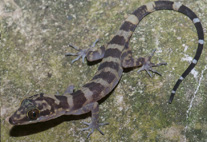Abstract
This article for the first time presents the morphology of the egg, three larval instars, pupal cocoon, prepupa and pupa of myrmecophilous rove beetle Thiasophila angulata (Erichson, 1837) along with illustrations of structural features and chaetotaxy. Morphological comparisons are made between larval instars, and between the mature larva of T. angulata and other known larvae of Aleocharinae belonging to the tribes Athetini, Hoplandriini, Liparocephalini, Lomechusinii and Oxypodini. Pupae of T. angulata and two other species of Aleocharinae: Pella laticollis (Märkell, 1844) and Haploglossa picipennis (Gyllenhal, 1827) are compared. The mature larvae of T. angulata were observed to vary morphologically depending on the ant host species (Formica polyctena, F. rufa or F. truncorum). Host-related variation was observed in median larval body length, head and pronotum width and structure of the antennae.

